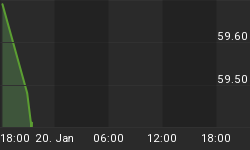What the history of ancient gold coinssays about Europe's kingless, faceless money today...
So when Vespasian was proclaimed Emperor by the legions in Egypt in AD 69, he hurried to strike silver and gold coins at Antioch, Tacitus tells us.
Two hundred years later, the "insane despot" Commodus would only believe that his friend Perennius was plotting to overthrow him when he was shown coins already bearing his former favorite's image. And ancient Persian kings went further, says the later Armenian chronicler Moses of Chorene, each seeing to it that "all the money in the royal treasury was recoined with his effigy" as soon as he took power.
The face on a coin mattered, in short, and mattered a lot. Not least because, as head of state, the king or caesar was also head of the army. And with armies needing to be paid if you wanted to keep them on side, coins were the most common currency - a sort of "state gazette", in the words of a much later English writer - for spreading political news to pre-literate peoples.
In the ancient world, "Coins followed - indeed accompanied - the sword," says late-20th century historian Glyn Davies, pre-empting a point which this year's Debt: The First 5,000 Years by David Graeber takes pains to stress, albeit via the 'Cartalist' theory that early governments chose to create and foster monetized markets the better to tax them.
"Payment for troops and for their large armies of camp-followers was generally the initial cause of minting," says Davies. "If the spread of Greek, Macedonian, Hellenistic and Roman money had had to depend solely on trade, the process would have been far slower and far more limited in extent."
Once coined money took hold - thanks to the imperial troops - it also bore "this advantage over any other kind of monument," writes the 19th century antiquarian Alexander Del Mar: "it could not be successfully mutilated, forged or suppressed." Caesar's coin carried his majesty with it. His image spread and assured his power with every transaction.
Rome fell in the mid-5th century AD. But the Roman Empire lasted another 1,000 years, and its money still reached far west and north outside the Byzantine Empire - run from Constantinople, today's Istanbul. This second Rome and its distant emperor stayed very close to the people of post-Roman Europe, however. Because their local silver and bronze coins aped Byzantine money almost exactly, repeating its Christian imagery even amongst pagan tribes. Byzantium's Arabian neighbors only broke from copying its coins when Justinian II replaced the cross with a bust of Christ Pantocrator (the all powerful) in the early 8th century.
What's more, no gold coins were minted in Rome's former western provinces without bearing the name of the reigning Byzantine ruler for nearly 75 years after the original empire's demise. "Every liberty was given by the Basileus Justinian I to subordinate princes to coin silver as much as they chose," wrote his legal advisor, secretary and historian Prokopius in the mid-6th century. "But they must not strike gold coins, no matter how much gold they possessed."
The best 19th-century antiquaries took this - and other evidence - to mean no gold coins were minted outside Constantinople's direct control until at least the 13th century. Indeed, they believed no gold mining was allowed or conducted outside the Emperor's command either. "The facts are simple and indisputable," wrote Alexander Del Mar in 1896:
"Julius Caesar erected the coinage of gold into a sacerdotal prerogative; this prerogative was attached to the sovereign and his successors...It would have been sacrilege, punishable by torture, death and anathema for any other prince than the sovereign-pontiff to strike coins of gold; it would have been sacrilege to give currency to any others..."
According to Del Mar, no king of England - separated from Constantinople by 3,000 miles of sea, forest, mountains and warring kingdoms - minted gold coins between the 8th and 13th century, happily relying on a trickle of bezants (from Byzantium, the pre-Roman city where Constantine founded his second Rome in 303) for high-value money. But gold coins were being struck in local mints across Europe, however, and almost immediately after the fall of the west Roman Empire. The confusion comes because those princes and foreign kings picking up the tools of power chose to imitate the ruling Byzantine emperor's gold coins exactly.
Such "pseudo-imperial" pieces can be near-impossible for numismatists to distinguish from the emperor's originals. Because they "generally bear the current Byzantine emperor's image and name and the mint mark of Constantinople" - the Greek letter Δ - explain modern scholars Eurydice Georganteli and Barrie Cook. In the first 100 years after the fall of Rome, only the Merovingian king Theodebert I, lord of what is now Reims in France, dared deviate from the distant emperor's model, minting gold coins in his own name in the town of Metz and giving himself imperial titles on them, too. But his coins were not influential and "remained an anomaly," say Georganteli and Cook. Even when the image of local rulers did begin to appear around 580, the imperial style still ruled as "the basic physical manifestation of authority and power."
Long after Rome's power slipped from Europe, in short, coining gold was still an imperial right, even if the emperor ruled 2,000 miles or more to the east in what is modern Turkey. Del Mar rightly saw in this "the sacred character of gold...an ancient myth put to new political use" also by Hindus and Buddhists in medieval India. Across all these societies, money proved the king's power. Money was in fact its most common and obvious manifestation, with his image carried in purses and passed hand to hand in the market.
So what to make of the kingless, faceless Euro today? More to come in Part II...
















